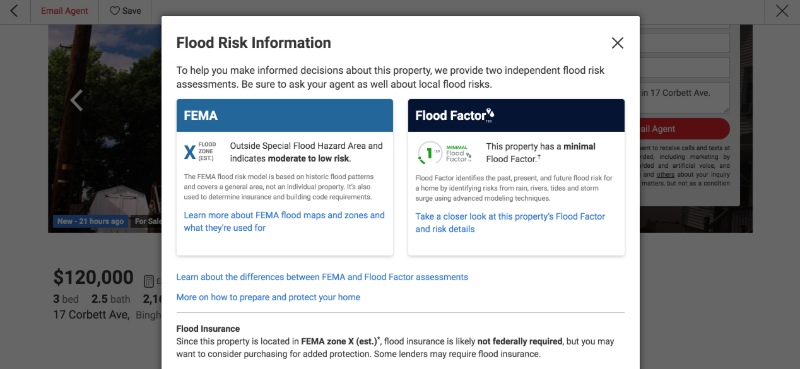
Since buying a home will be the most significant financial decision of most people’s lives, prospective buyers deserve to understand the full cost of their investment. That’s why a nonprofit, First Street Foundation, is compiling an updated list of the flood-insurance risks for millions more properties nationwide and publishing their findings online for all to see.
As changing climatic conditions have resulted in storms of greater strength and in greater numbers, the nonprofit group is filling in the massive gaps in the Federal Emergency Management Agency (FEMA) flood zone designations.
“Unfortunately, inaccurate FEMA flood maps and nonexistent or weak real estate disclosure laws make it extremely difficult for home buyers to learn of a property’s flood risk or even its flood history,” Joel Scata who studies flood risk at the Natural Resources Defense Council, told NPR.
FEMA has around nine million properties in flooding zones, wherein homeowners would be required or advised to buy flood insurance, however First Street Foundation’s clever combination of data has produced a more accurate flood risk map that takes into account climate change, sea level rise, and altered rainfall patterns and storm paths, and that will continue to update faster and more efficiently than FEMA’s flooding maps.
Through the unprecedented partnership of more than 80 world-renowned scientists, technologists, and analysts working together, First Street was able to identify an additional 14.5 million homes that are in potential flood areas.
Their tool, Flood Factor, allows you to enter a zip code and bring up anything that’s available on homes in that area.

However, the effort has been looked at glumly by major real estate companies and homeowners alike who are worried that flood risk designations would diminish the property value of their homes
But Realtor.com agrees that buyers deserve to know everything, risks included, about a home before making a purchase, and now all 110 million listed properties on their website contain either publicly or privately assembled flooding data.
“They can elevate their home on stilts. They can add a sump pump into the basement. They can install a rain garden outside,” Realtor.com executive Leslie Jordan told NPR. “But they must know their risk first.”
No comments:
Post a Comment